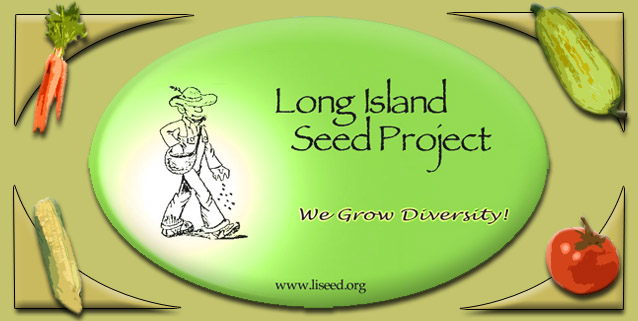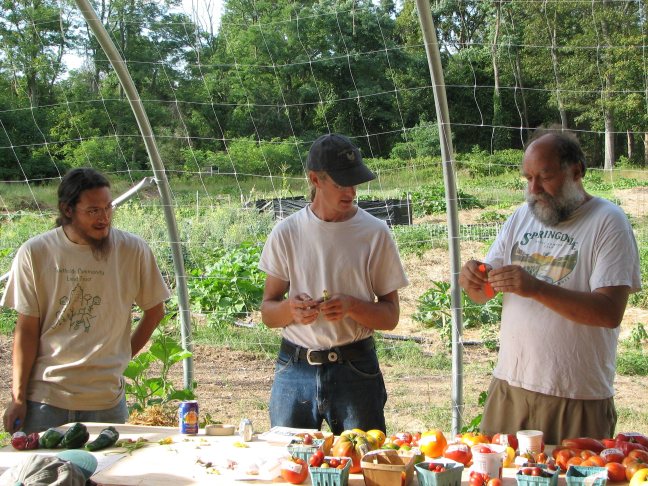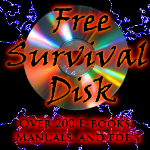
Its been an unusual Spring and Summer, and equally unusual growing season for gardeners. So if this has been one of your first efforts at
growing your own, please do not be disappointed. Its been tough on
all of us so far.
Victory gardens are coming back into style since the price of oil has raised the price of everything whether its been directly effected or not; it makes us yet once more in the position to be a bit more independent in our needs to find real wholesome food at a reasonable rate. Not so
much because of shortage but because of the cost. Plus farmers and
gardeners have been sold so many prepackaged items to supposedly
make the experience of gardening "easier" we tend to gravitate towards
that instead of learning the traditional ways, as it might not be so darn
convenient.
For many to get through the idea of using organic compost (decaying
food and plant matter!) they have to have it go to a recycling center
then go back to shovel it in bins to pick it up. Yet we still toss many
things such as coffee grounds and banana peels into the garbage can.
A very few have taken to putting the coffee grinds back into the original
container which is a great idea! But instead of tossing them away for
another giant land fill, they could go around the base of your flowers or
shrubs. Or even into the composter, or in a hole in the garden and then
cover back up with dirt. As it decomposes it feeds beneficial fungus that
roots need in the soil along with the release of nutrients.
If you had a difficult time to get anything to grow, consider working on your
planting beds. There are various methods which can at times make it seem
more difficult, but the best advice is to make sure the soil can stay loose,
but also have the right amount of "stuff" that makes plants want to grow no
matter what you put in that spot. Also never plant tomato plants in the same
soil as last year. If you have space limitations, this might mean sterilizing the
soil in your oven, or use freshly composted soil from a hot pile, or put your
tomatoes in planters. Just as long as a heavy rain doesn't wash out all the
good nutrients out of the soil and then it immediately dries out when the sun
comes back out. I did this more than once even with my experience. You
are then forced to keep watering the soil with tomato food plant food or any
plant food you might have available. If you feel a need to dump out the water
from the bottom tray, save it and pour it in your garden elsewhere, or save in
a jug and re-water the plant when it gets dry.
Another good tip is to either work on new beds before you go out and start
buying a bunch of plants, or try growing a few from seed each year till you
get that skill down. Even if your first few attempts seem failures, you have
to try again, for the experience.
If you have porch or patio space; try growing herbs like basil in a pot. Then
you can bring it in when the weather gets chillier. Usually soils topped with
peat moss keeps insects at bay. Also if the pots are elevated into a type
of window box or deck, they are less likely to get an aphid infestation. Yet
another method is to take cuttings and get them rooted and put into fresh
potting soil for indoors for the winter. The rooted cuttings can be brought in
and inspected for bugs if its a big problem in your area, though I have had
quite good luck just bringing in certain plants and saving them so I didn't
have to purchase them all again next season. Like geraniums. (that is a
story for another article)
If certain plants grow in your soil and others won't. Try to discern why certain
plants may or may not be doing well. It took a few tries to figure out that a
few different things could be affecting plants. Runoff from driveway, black
walnut trees, continued heavy rains on bare soils, or potted plants, growing
plants of the same type in the same place several years in a row. Large
population of squirrels in the area or deer. Soil infestations of nematodes
or cut worms that like to stump newly planted plants; or maybe even snails.
One problem that has sharply decreased is bug damage since I befriended
the toad population in my garden. If I run the sprinkler they come out to play
and also to gulp down their weight in bugs of all kinds..If it moves they eat it!
No deciding if its chocolate or vanilla - it's gone! Also remember worms in the
garden soil are needed to aerate and make worm castings. When you use a
product such as Roundup to kill weeds to save edging your boarders, you are
also poisoning the worms and the toads. So you are saving yourself a little
work but killing off other beneficial friends of the earth. If you have a weed that
attracts bees, you are also helping to kill off the world population of pollinators
and making it more difficult for food to grow. Anywhere.
So keep it as simple as possible. Try some test beds and keep a small journal
with weekly notes, and keep trying. If you had to grow your own food, or more
likely your grandchildren will have to grow their own food and you will be able
to pass your knowledge and experience on to them.









































I like to do "Seed Trains" with persons who would like to learn about seed saving, trading, and growing your own. (It does'nt matter what state you live in) You can send me an email, or just ask.
The basic rules are collect seeds of plants you can comfortably identify and mark the name on a package. If its from a garden, then know the rules of how to probagate or collect heirloom seeds. Make sure the seed is fully mature before picking. (This may take some practice or experience. Some seeds are easier to collect than others)
When growing some types of vegetables from seed, if its planted next to one of its realtives, it might cross pollenate. You will still get a tomato from a tomato seed but it may not taste or look the same. Keep this in mind if you decide to plant 12 different tomato plants next to each other. Even if they are "heirloom".
If your not collecting the seeds it doesn't matter; but it sure is cheaper to save some seed than having to purchase it each year and hope your usual distributer still carries it. You can choose to rotate your favorites, or plant them further apart, or use spun bond to cover during blooming and keep one type covered while the other is getting pollenated. Or hand pollenate. This is reasonable with some types of veggies but not all.
People started collecting seeds in the first place; to ensure that their best loved plants would be there for them again the next season. They would take the best tasting tomato and keep the seeds in a cup to ferment for a few days. When it starts to look like the gelantous mass is breaking down and releasing the seed; its time to rinse and dry off on a paper towel. Allow a few days to dry completely.
I usually take a half of an envelope or make some packets from recycled paper. Or reuse some envelopes to keep seed in. I keep a scrap book of types and growing conditions and notes to fall back on for next season. Seeds do best when they are cool and dry, and kept out of direct sunlight. The viability of some seeds is longer than others. And some seeds do best when replanted right away. (More so wild edibles)
Its best if your going to collect seed to try it with one or two items the first season. If you try and take on too much you will end up not being a happy gardener and give up. If the price of food keeps going up,(should I say when?) it will be a good skill to have.
I know from past experience, even with my own family they would grow a dozen tomato plants and then give away tomatoes to everyone. I'm guilty of the same thing; and sharing is nice but don't forget about sauce or canning.
If you ever tried to make sauce, you would not just toss the "imperfect" ones into the compost, but instead try and make sauce out of them if not a bushel or so. Give it some thought. If your seed grows true to form, taste and color three seasons or more in a row, you can safely say you still have an heirloom seed. If you save seed and all the tomato plants look different, and taste different, and some even have curled leaves or other problems, you probably got a throw back from one of the original parent plants or a new cross breed. If you were in a tight pinch and didn't wish to just toss the seed, you could do a test planting of some of the seeds and see what happens.
If your wanting to ensure some will be heirloom and then mark those with a colored twist tie and numbering system and then the next year try growing the seeds and see what you get. If one tomato plant tastes way better than some of the others, then that is the one you want to keep seed from. Even when you have all the same variety of tomato plant you may end up with some better tasting than others.
This is very true with wild edibles. Since they are not cultivated, they can vary in taste and texture from plant to plant and even in chemical content. That is why it is good to know what you have when foraging and what to expect. Some plants are quite edible and some only certain parts of the plants can be eaten like rhubarb..the stalks are edible but the leaves will make you quite sick. This used to be passed down from grandparent to grandchild. Now most of us are re-learning it.
Some plants when allowed to go to seed, will "winter sow" and you get new starter plants which you just transplant into their new beds while they are still small. I have done this with broccoli, parsley, leeks and garlic. I have also had some leafy greens come up by themselves as well as dill. If I don't eat them before I make it back to the house, I take little bits of edibles and toss them into my salad bowl. When its early in the season, I toss in some garlic scapes, dandilion leaf and even wild violet leaves and flowers can be added to beet top leaves or even wintered over carrots. Once you get a feel for the how and why, it starts to become a little bit easier each time. I feel its important for everyone to grow some food even if its only one tomato plant. A cardboard box full of corn which can be a nice privacy screen, smells great and the stalks are useful for fall decoration as well as crafting. corn stalks make great compost too, if you don't end up feeding them to livestock. I believe everything has a use. If you are dragging alot of refuse to the curb for others to carry off, maybe you need to rethink your plan. I can't help but shake my head when I see pumpkins at the curb instead of composted in the garden.
You can save some of your pumpkin seeds and roast the rest of them to eat like nuts. Some people grind them up to make a flour or add to flour. Raw foodies grind them up and add them to smoothies, as well as sunflower seeds.
Other seeds like broccoli. If you keep extra seed available you can start sprouts for a salad, sandwich or snack. There are so many reasons to collect seeds as there are plants.
If anyone has collected seeds, they can post their experiences, or you can ask questions and we will try and answer a few of them too.
Plus don't forget about joining a seed train or have a seed swap. I can tell you more about that too if your interested. Cher